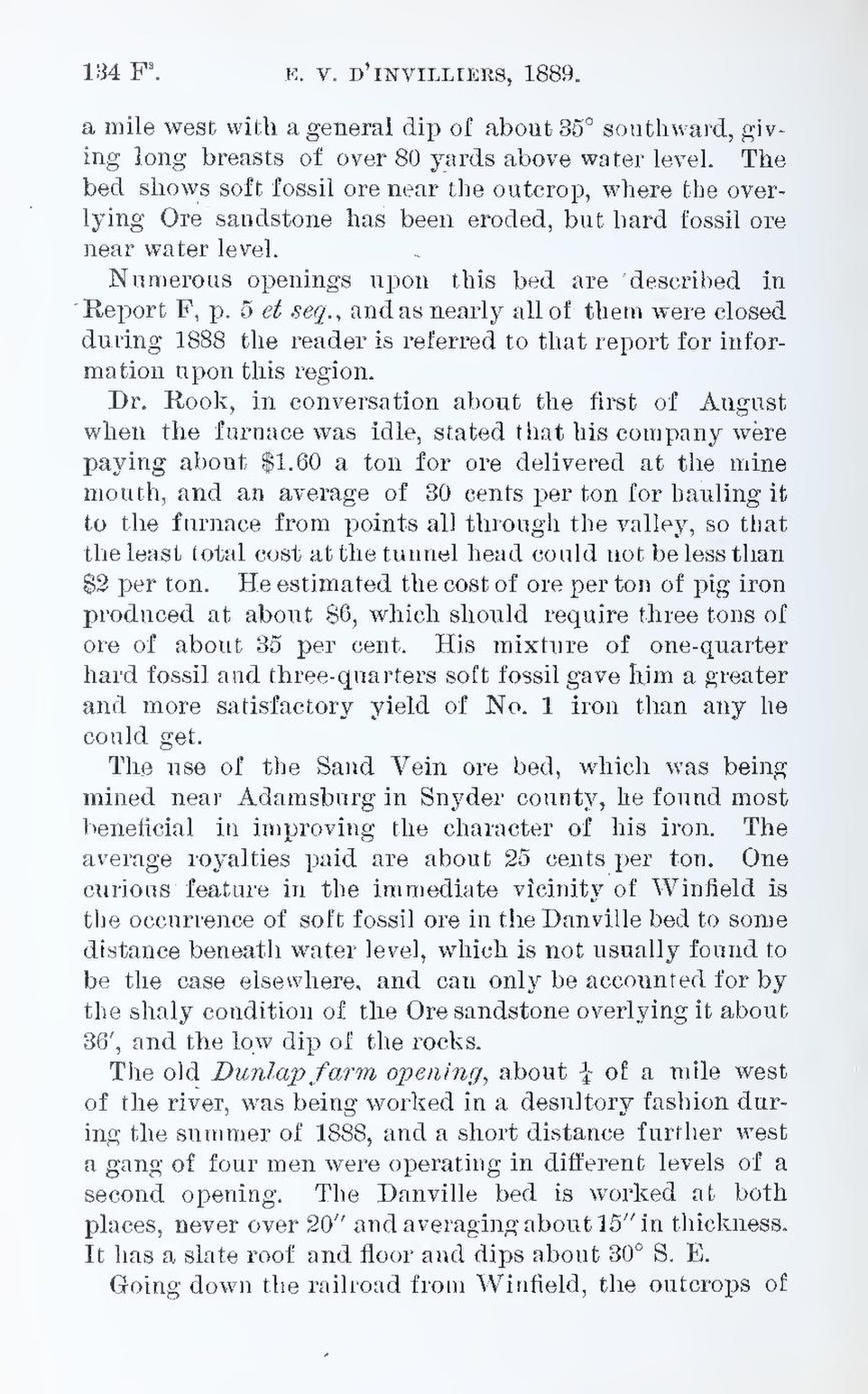a mile west with a general dip of about 35° southward, giving long breasts of over 80 yards above water level. The bed shows soft fossil ore near the outcrop, where the overlying Ore sandstone has been eroded, but hard fossil ore near water level.
Numerous openings upon this bed are described in Report F, p. 5 et seq., and as nearly all of them were closed during 1888 the reader is referred to that report for information upon this region.
Dr. Rook, in conversation about the first of August when the furnace was idle, stated that his company were paying about $1.60 a ton for ore delivered at the mine mouth, and an average of 30 cents per ton for hauling it to the furnace from points all through the valley, so that the least total cost at the tunnel head could not be less than $2 per ton. He estimated the cost of ore per ton of pig iron produced at about $6, which should require three tons of ore of about 35 per cent. His mixture of one-quarter hard fossil and three-quarters soft fossil gave him a greater and more satisfactory yield of No. 1 iron than any he could get.
The use of the Sand Vein ore bed, which was being mined near Adamsburg in Snyder county, he found most beneficial in improving the character of his iron. The average royalties paid are about 25 cents per ton. One curious feature in the immediate vicinity of Winfield is the occurrence of soft fossil ore in the Danville bed to some distance beneath water level, which is not usually found to be the case elsewhere, and can only be accounted for by the shaly condition of the Ore sandstone overlying it about 36′, and the low dip of the rocks.
The old Dunlap farm opening, about ¼ of a mile west of the river, was being worked in a desultory fashion during the summer of 1888, and a short distance further west a gang of four men were operating in different levels of a second opening. The Danville bed is worked at both places, never over 20″ and averaging about 15″ in thickness. It has a slate roof and floor and dips about 30° S. E.
Going down the railroad from Winfield, the outcrops of
